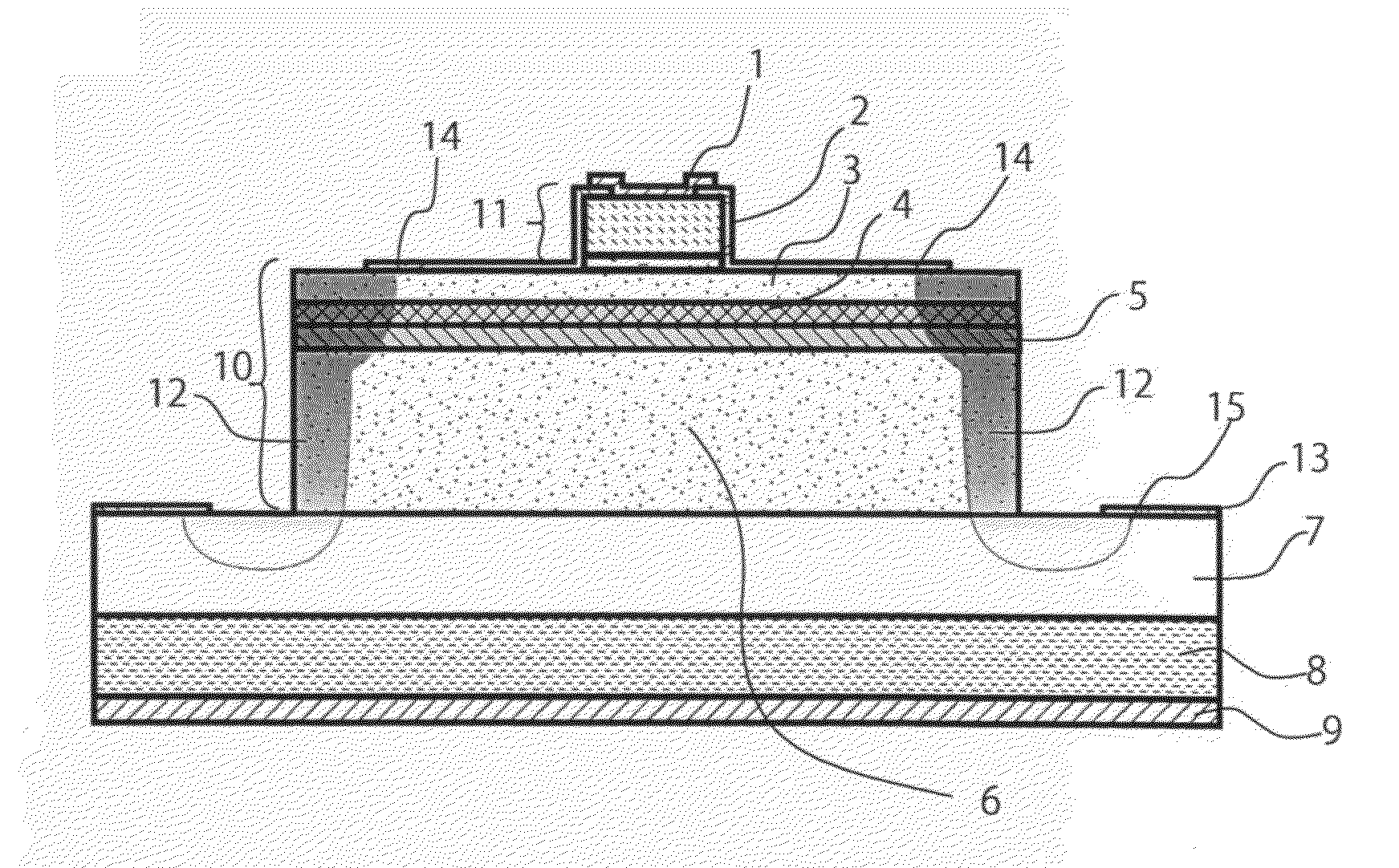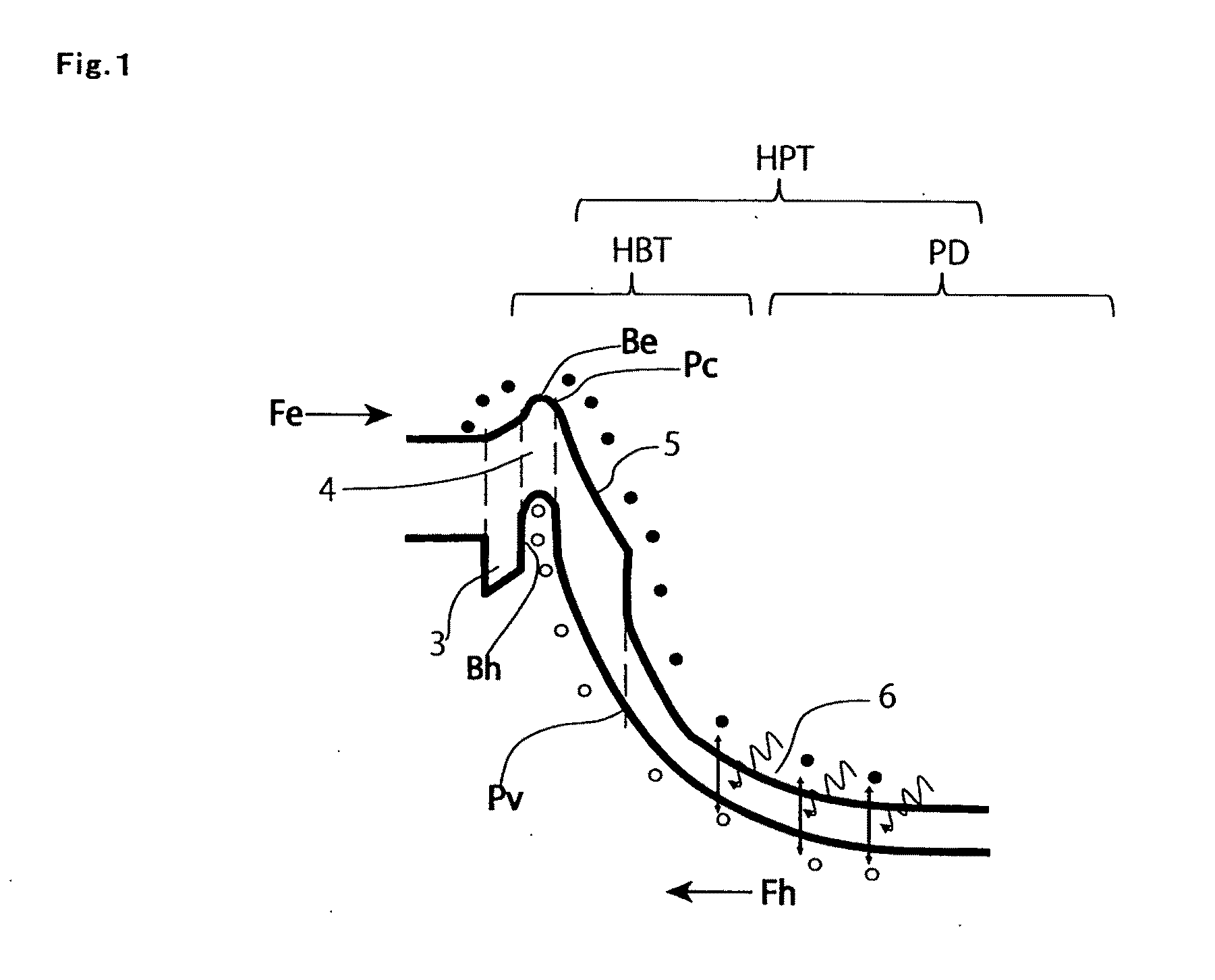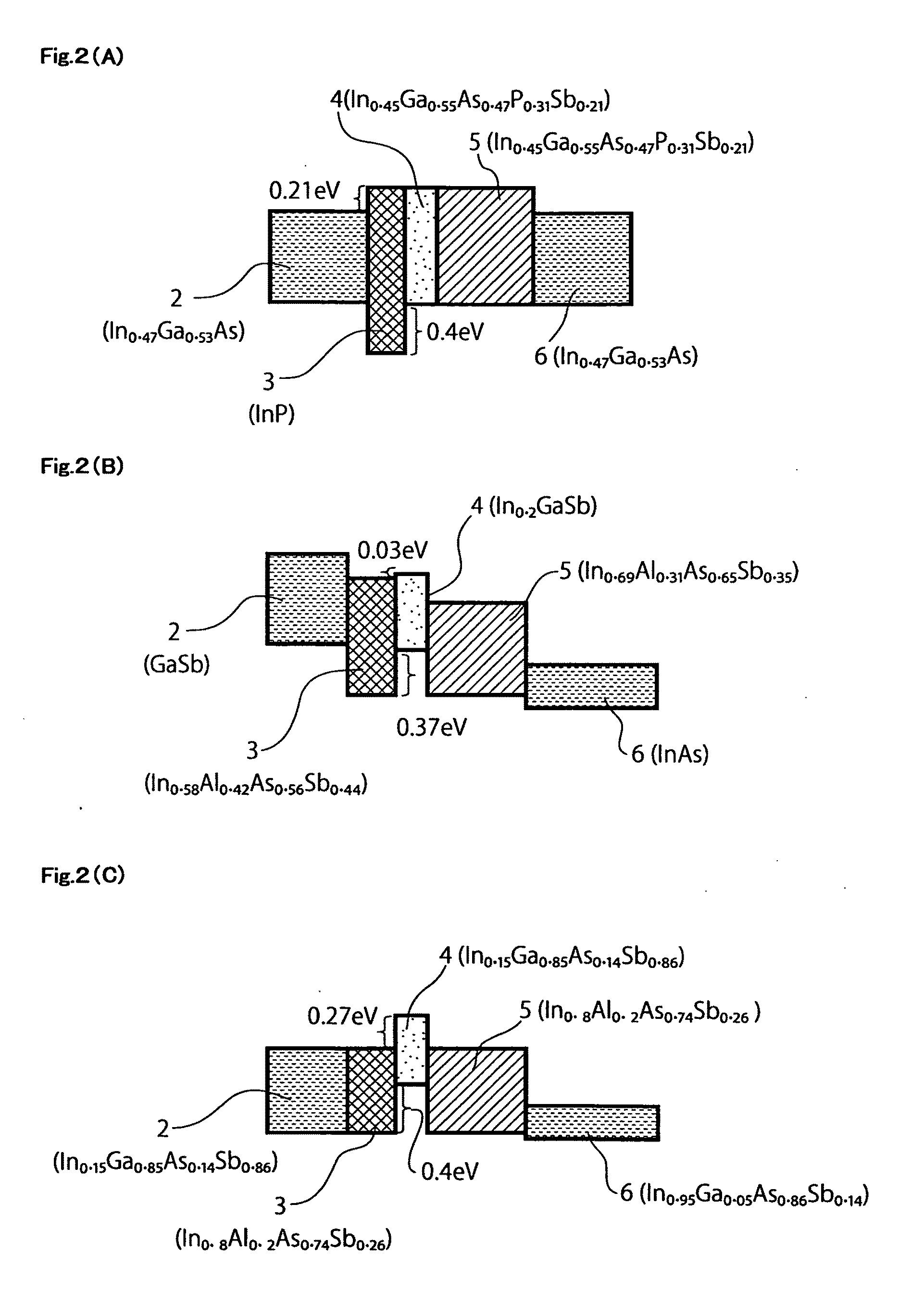Hetero-junction bipolar phototransistor
a phototransistor and bipolar technology, applied in the direction of semiconductor devices, electrical equipment, basic electric elements, etc., can solve the problems of limited detectivity, limited detection sensitivity, and small current output, so as to prevent the decrease of the current gain of the transistor, facilitate the implementation of the device, and improve the effect of detection sensitivity
- Summary
- Abstract
- Description
- Claims
- Application Information
AI Technical Summary
Benefits of technology
Problems solved by technology
Method used
Image
Examples
Embodiment Construction
[0064]The preferred embodiments of the present embodiment are provided in FIG. 1 and subsequent figures. Through all the figures, the same symbol and numbering correspond to the same or similar components. Therefore, in each explanation along with each Fig. among this specification, when there is no description of the component with symbols in the Fig., the description of the component with the same symbol provided in the other figures may be used alternatively.
[0065]A hetero bipolar phototransistor (HPT) is the structure where a photodiode (PD) is stacked on a hetero-bipolar transistor (HBT). FIG. 12 shows the band gap profile of the conventional example, where the photo-absorption layer of a narrow band gap is added to a classical HBT. Previously, it was believed to be preferable that the band gap of the base layer 4′ of a hetero-bipolar transistor should be small in order to confine holes efficiently and the band gap of the collector layer 5′ should be large in order to keep brea...
PUM
 Login to View More
Login to View More Abstract
Description
Claims
Application Information
 Login to View More
Login to View More - R&D
- Intellectual Property
- Life Sciences
- Materials
- Tech Scout
- Unparalleled Data Quality
- Higher Quality Content
- 60% Fewer Hallucinations
Browse by: Latest US Patents, China's latest patents, Technical Efficacy Thesaurus, Application Domain, Technology Topic, Popular Technical Reports.
© 2025 PatSnap. All rights reserved.Legal|Privacy policy|Modern Slavery Act Transparency Statement|Sitemap|About US| Contact US: help@patsnap.com



